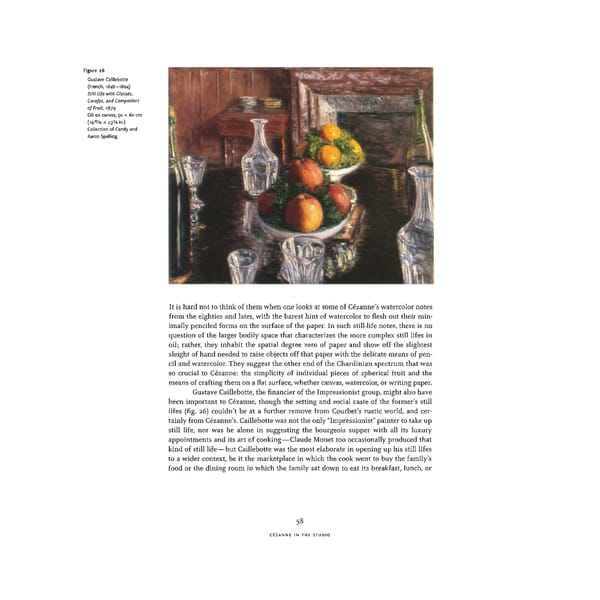Figure 26 Gustave Caillebotte (French, 1848-1894) Still Life with Glasses, Carafes, and Compotiers of Fruit, 1879 Oil on canvas, 50 x 60 cm 11 5 (i9 /i6 x 23 /8 in.) Collection of Candy and Aaron Spelling It is hard not to think of them when one looks at some of Cezanne's watercolor notes from the eighties and later, with the barest hint of watercolor to flesh out their min- imally penciled forms on the surface of the paper. In such still-life notes, there is no question of the larger bodily space that characterizes the more complex still lifes in oil; rather, they inhabit the spatial degree zero of paper and show off the slightest sleight of hand needed to raise objects off that paper with the delicate means of pen- cil and watercolor. They suggest the other end of the Chardinian spectrum that was so crucial to Cézanne: the simplicity of individual pieces of spherical fruit and the means of crafting them on a flat surface, whether canvas, watercolor, or writing paper. Gustave Caillebotte, the financier of the Impressionist group, might also have been important to Cézanne, though the setting and social caste of the former's still lifes (fig. 26) couldn't be at a further remove from Courbet's rustic world, and cer- tainly from Cezanne's. Caillebotte was not the only "Impressionist" painter to take up still life, nor was he alone in suggesting the bourgeois supper with all its luxury appointments and its art of cooking—Claude Monet too occasionally produced that kind of still life—but Caillebotte was the most elaborate in opening up his still lifes to a wider context, be it the marketplace in which the cook went to buy the family's food or the dining room in which the family sat down to eat its breakfast, lunch, or 58 CÉZANNE IN THE STUDIO
 Cézanne in the Studio: Still Life in Watercolors Page 72 Page 74
Cézanne in the Studio: Still Life in Watercolors Page 72 Page 74